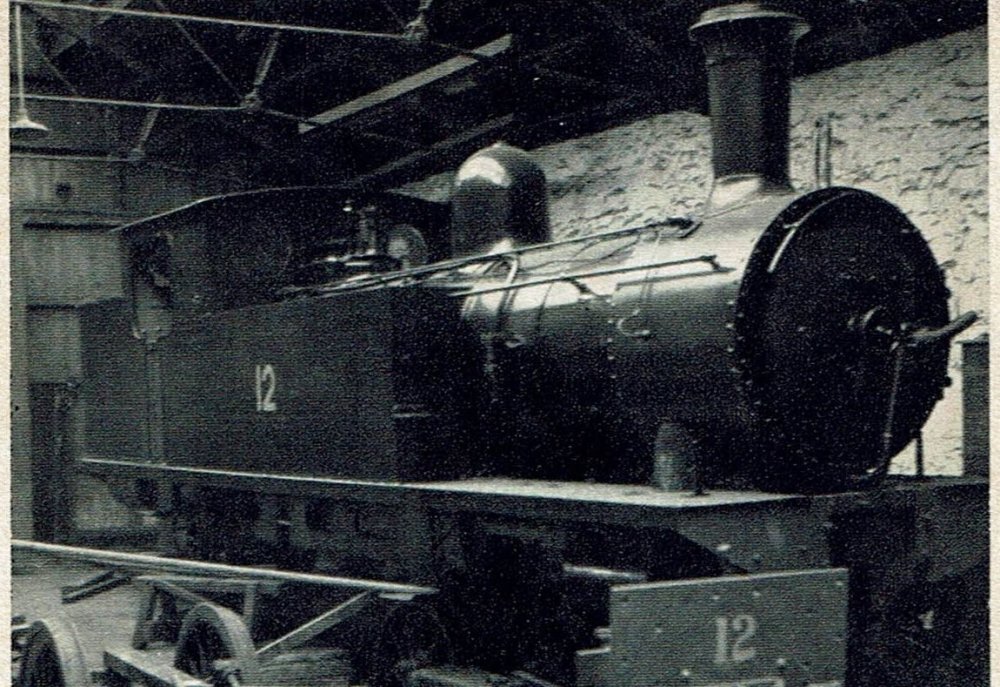-
Posts
4,877 -
Joined
-
Last visited
-
Days Won
119
Content Type
Profiles
Forums
Events
Gallery
Everything posted by Mayner
-
I think the "Tan" livery which first appeared on the new Van Hool Atlanteans in the late 70s was not exactly well received by the travelling public and local enthusiasts who in plain speaking Dublin fashion described it as s--t. The public seemed to prefer the blue and cream and the Golden Brown or all over tan scheme was replaced with a smart two tone green with the arrival of the Bombardier buses on Dublin City Services in the early 80s.
-
It looks like a Sulzer hauling a C Class, there was speculation on a earlier thread whether the C had broken down and the B101 had rescued the train. My theory is that the C is being hauled to Dungarvan to shunt the yard and return with a goods to Waterford. Its doubtful a C would have been up to hauling and stopping a heavy goods train on the steeply graded and sharply curved Waterford-Dungarvan section. At the time there was a one daily goods in each direction between Waterford & Mallow and a daily out and back Waterford-Dungarvan Goods.
-
1361 & 1367 were 64 seat Open Second's introduced in 1953 to run with the AEC railcars. Early (up to 53) are best described as Mk2 Bredins as they used traditional coach building techniques (hardwood timber framing), conventional steel underframes and ran on GSR style bogies. The Open Seconds and Buffet Cars were completely new designs, though the side corridor stock was based on existing 1930s Bredin designs. The end profile of the 1930s Bredin and new CIE built stock was quite different, slightly wider and more upright in profile. To complicate thinks further CIE started using Bulleid Triangulated underframes and Commonwealth bogies under coaches built from late 1953 onwards including 2422. In short CIE built 3 distinctive designs of main line coaching stock in the 1950s there was no such thing as a Standard CIE coach during the 1950s. In the 1950s AEC railcars worked the most prestigious main line passenger services, with steam and later diesel working the (slower) heavier mail and perishable trains. Westland Row-Galway/Westport services were dieselised in 1953? with a single return railcar daily a 4 coach train with 2 power cars and 2-1904 Brake Second Opens (fitted with driving cabs) which divided at Athlone. The train was strengthened to 6 coach the following season with 4 powered cars, an open standard and a buffet. The 4 car set with buffet running to Galway, the 2 car railcar to Athlone, this seems to have been the standard formation for the Cu-na-Mara up to the late 1960s, when the Westport connection operated as a through train to and from Dublin. AEC railcar sets could be made up to 8 coach formations with gangway connections throughout 2 2600 Driving Cars, 2 Powered Intermediates and four coaches, the 8 coachs sets appear to have been used on Kingsbridge-Cork and Tralee express trains. Some of the Powered Intermediates were rebuilt from Inchacore built AEC cars and were slightly higher than other stock, giving these sets an up and down roof profile.
-
My two most effective and efficient job interviews were approximately a year apart in the Mid-80s when when I worked as an "engineer" manager in construction. I was out scouting around for work possibly trainspotting around Donabate and called into a site where the contractors had recently broke ground. A couple of the workers recognised me and asked if I was looking for work. It turned out the contractor was former client of mine and were looking for someone to run the job, the contracts manager "Dennis" offered me the job straight away, but I was not happy about the rate of pay, I met the big Boss the following day who put me on a bonus but told me not to say anything to Dennis. We had a very enjoyable summer/autumn in Donabate developing a housing subdivision beside the main line (I never brought my camera to work!) pretty much left to our own devices, the economy and construction was going through a tough time the boss closed the business and moved to Atlanta Georgia and I headed for Holyhead! The second interview was on my first day in London in between visits to W & H Models in New Cavendish St. and Victors of Islington, I spotted an add for an engineer with an Irish owned Civil contracting company in the Evening Standard and asked to immediately report for an interview in the companies Wembley Office. I was interviewed for a completely different but better paying role by one of the Directors most likely because they needed someone for that role immediately. The company was very good to work for in terms of pay and conditions, paying a retention bonus to its Irish migrant workers, the downside was the people were locked into particular roles because of very rigid senior management thinking. I ended the day with a job and parts to complete a J15 and a copy of Model Railway Journal.
-

Feast or Famine - Passenger Stock for A's and 121's
Mayner replied to DJ Dangerous's topic in Irish Models
The question is whether there is sufficient demand to sell 3000 of each type @€65 or 1000 of each type @ €195 each to provide a similar return on investment to the commissioner. When I introduced the JM Design tin van kits approx 10 were commissioned as rtr models in the €150 price range which covered my costs but did not return a profit. While there is reasonable interest in the re-run of the heating and luggage van kits only two people have expressed an interest in the TPO/heuston Tool Van. -
A Bachmann Class 66 chassis may fit, quieter more reliable running https://www.ebay.com/sch/i.html?_from=R40&_trksid=p2499334.m570.l1313&_nkw=bachmann+ews+class+66+&_sacat=122604
-
There are a number of pre-War "logs" with average speeds in the mid-eighties on the Dublin-Cork and Dublin-Belfast main lines in O.S. Nocks Irish Steam. There is a record CJ Allens log of the 1934 record breaking non-stop Cork-Kingsbridge run of the rebuilt Watson 4-6-0 402 with 3 coaches (MGWR Royal Saloon, Dining Car & Bogie Full Brake) conveying the newly appointed United States Minister to the Free State. Average speeds in the high 60s-70s were maintained north of Limerick Junction with an average of 85.6 between Ballybrophy and Portlaoise (Maryborough) where the record 87mph was recorded. A top speed of 82.5 was recorded between Rathduff and Blarney on a 1937 southbound run of the Kingsbridge-Cork (English mail) with a 9 Coach 290/310 train behind Caprotti rebuilt Watson 4-6-0 401 average speed seems to have been in the high 60s north of Mallow with a maximum of 72 recorded between Templemore and Thurles. Nock described the coal as little better than slack which tended to congeal when sprayed with water to control the dust, at station stops two men came forward to assist the fireman trim the coal forward otherwise it would have been difficult for the fireman to maintain speed. 401 was recorded at a maximum of 71 between Hazlehatch and Lucan with a 360 ton train on the return leg of the "English Mail" probably the GSRs crack train. "Maeve" was reportedly achieved a maximum of 92mph on a demonstration run in July 1939. Nocks detailed August 1939 log of Maedb with a 450 ton train on the up "English Mail" achieved a maximum of 79mph between the Curragh and Newbridge with speeds in the high 60s-mid 70s onwards to Clondalkin. The train was strengthened to accommodate a large number of returning passengers off a Transatlantic Liner and an opportunity to test how much the new locomotives could haul without assistance up the steep grades out of Cork station. 800 hauled the train out of Cork without a problem train and kept time despite problems with poor quality coal and the regulator sticking briefly. There was a full house with 7 people on the footplate as far as Mallow with the District Locomotive Inspector, Cork Shedmaster, a local running inspector and an engineer from Inchacore coming along for the ride! The book includes a log of a Belfast-Dublin run of the Up Limited mail behind 173 Galteemore with 225 tons or 7 coaches to Dundalk and 8 coaches or 260 tons onwards to Dublin a maximum of 86.5 was recorded on the downhill section between Adavoyle and MP55.5 with speeds in the 70s between Moira and Castlebellingham. South of Castlebellingham speeds were mainly in the high 60s with a maximum of 78 between mp 16 and Malahide, the crew also had to contend with fog between kellystown Box and Drogheda.
-
Kilmacthomas would make an excellent scenic and operational layout, with the river, town and the railway structures against the backdrop of the Comeragh Mountains. Goods traffic appears to have been quite heavy with a small goods yard at the station and the Fair Green siding which connected to the main line on a ridge between the two viaducts. Flavahan's appear to have been the biggest shipper their porridge by rail! The signal box, crossing loop and a short siding was retained at Kilmacthomas when the line was re-opened for Quigley Magnesite traffic in the early 70s until final closure in 82? The Dolomite trains from Bennetts Bridge to Ballinacourthy were the heaviest in Ireland up to the start of Tara Mines traffic in the late 70s, two trains daily in each direction 20 wagon rakes of 4w hopper wagons (same as IRM model) worked by pairs of B141/181 diesels. The daily Tivoli-Ballinacourthy Magnesite & oil train was regularly hauled by a single 001 Class hauling a mixed rake of covered magnesite hoppers and tank wagons. In steam days Woolwich Moguls worked the trice-weekly Cork-Rosslare Express with a small wheeled Coey 333 Class 4-4-0 working the Daily Cork-Waterford Passenger & the 101 or J15 Class the goods. B101 Class took over passenger & possibly goods workings until replaced by B121 & B141 Class and A Class before the 1967 closure of the line.
-

Feast or Famine - Passenger Stock for A's and 121's
Mayner replied to DJ Dangerous's topic in Irish Models
There is always the option of following the late David Jenkinson's example in "Carriage Modelling made easy" and scratchbuilding the models that are not produced as rtr models or kits. David Holman's MGWR brake and convertible wagons are excellent examples, using simple techniques. -
I love the BW Beetle presumably delivering milk to the creamery, the Mercedes and green sports car evidence of 1960s rural prosperity. My mother and father were invited to a wedding in Ballinasloe around the same time and were totally taken aback by the signs of my fathers farming cousins prosperity, flash cars, high fashion and extravagant hospitality.
-
Re-building is covered in the August blog, https://cpineroad.blogspot.com/2020/08/00-works-class-330.html. The builder ended up replacing the chassis, motor and gears to improve the standard of low speed running! It looks like a decoder would have to be hard wired just might fit in the tank
-
Link to a review of the Southern Railway version of the model and the potential challenges in fitting a decoder. https://cpineroad.blogspot.com/2020/07/00-works-class-0330-0-6-0-saddleback.html The buyer re-built the loco with a two stage High level gearbox and Mashima motor because he was not satisfied with the slow running characteristics on the loco
-
Cattle traffic ceased in 1975, the heaviest traffic used to be from the seasonal cattle fairs from cattle breeding country in the West and Southwest to farms in the East for fattening (finishing) and for export. Most of the cattle traffic was lost with the shift from seasonal cattle fairs to cattle marts and the shift from live exports to meat processing during the 1960s. In later years cattle was transported by rail to meat factories plants at Roscrea and Grand Canal Street Dublin were served directly by rail, the Leixlip Plant was served by road from Hazlehatch on the Cork Line and Leixlip on the Galway Line. Leixlip and Hazelhatch were among the last stations to handle livestock traffic.
-

Thursday Walkabout on the Main Trunk Line
Mayner replied to Mayner's topic in Photos & Videos of the Prototype
Eight months later another day on Walkabout in King Country that did not exactly go to plan. The basic idea was to cycle the remains of the Ongarue Tramway and famous Spiral https://www.doc.govt.nz/parks-and-recreation/places-to-go/waikato/places/pureora-forest-park/ongarue-tramway-and-spiral/ but my knees were no longer up to it and I had to turn back after 3km. Still it was a beautiful sunny day a good escape from the cabin fever of the last 5-6 months. Signals were clear for a Southbound train at Te Kuiti so I decided to follow the railway line than the more direct SH3 & 4 Route to Ongarue. The Southbound freight was not far off, the Northern Explorer passenger train as overseas tourists are 3extremely scarce with the drop off in international air travel. After the almost level 200Km run from Auckland a pair of 3,600Hp Chinese built DL locos at the beginning of the approx 32km 1:70 climb from Te Kuiti to the summit at Poro-O-Tarao tunnel. The railway line on the left is the remains of the 2km Te Kuiti Industrial line which served local industries including a limeworks and a bulk fertiliser depot. Further up the valley the railway runs alongside SH30 before entering a narrow gorge where the railway climbs to a higher level. I was using an Android phone and had hoped to capture the train passing a distinctive round roof barn, a distinctive structure on this section of the line but could not see the screen in strong sunlight! Once clear of the gorge the line runs along a ledge between the valley floor and surrounding hill country. Train is about to pass through a shallow cutting as it approaches the Kopaki Passing place before passing into another gorge before entering a wider section of the valley. View of snow clad Mt Ruapehu from the watershed between the Waikato and Waunganui river systems, leaving the Poro-O-Tarao tunnel the railway runs through the Ongarue River Valley on the extreme right of the photo. The Ongarue system which lasted into the 1960s used American Climax, locally built AJ Price geared logging locos. https://teara.govt.nz/en/photograph/12244/wooden-trestle-viaduct Typical central North Island bush and the three active volcanoes from right Ruapehu, Ngauruhoe and Tongariro. A former workmate found this particular viewpoint while working in the area in 2017 and it sounded like it was worth checking out. Most of the bush (forest) is second or possibly 3rd generation re-growth after the land was cleared for agriculture about 100 years ago. -

Feast or Famine - Passenger Stock for A's and 121's
Mayner replied to DJ Dangerous's topic in Irish Models
Even long distance Intercity services from Heuston to Tralee & Westport made up of conventional stock could include quite a mix of coaching stock until replaced by MK3 & MK2D rolling stock in the mid 1980s. A typical Heuston-Tralee or Westport service would included a mixture of Craven, Park Royal and Laminate stock, a Buffet Car and BR van regularly loading up to 8-10 coaches regular formations on the Connolly Sligo & Rosslare services tended to shorter 5-6 coaches including Buffet & Van. Formations were strengthened off with older stock borrowed from Dublin Suburban services at weekends and for peak Summer and Christmas/New Year traffic. CIE had a habit of reducing train frequency, running longer trains and sometimes combining trains for different destinations during periodic economy drives. Midland Section trains sometimes loaded to 12-14 coaches on a number of occasions when Dublin-Galway-Westport-Sligo services were combined into a single train with Dublin-Galway trains detaching through coaches for Sligo at Mullingar and Westport at Athlone combined trains last operated for a short period during the 1970s oil crisis. Knock specials regularly loaded to 12-14 coaches of conventional stock into the mid 1980s. -
The saga of CIE Brake Standard coaches is a bit complicated. CIE built 10 Brake Standards of two different designs in 1950s and converted a further 23 Standard and Composite coaches to Brake Standards and Brake 1st in the early 1970s. A Laminate Brake Standard from the 1909-1913 series dating from the late 1950s was fitted with storage heaters for use with the G611 Class locos on the Branch in 1963. The "Loughrea Coach" (I don't recall the number) entered service on the branch in the light green livery. Jonathan Allens 1971 photo of B163 with a Laminate Brake at Loughrea. https://www.flickr.com/photos/152343870@N07/26240340648/in/album-72157714061635252/ The Laminate appears to have been replaced at some stage by 1904 a 1904-1908 series Brake Standard dating from 1953. https://www.flickr.com/photos/152343870@N07/40357066271/in/album-72157714061077963/ Locomotives & Rolling Stock of CIE & NIR (1979) notes that 1904 is fitted with storage heaters and in use on the Ballina Branch. The 1970s Brake Standards & Brake 1st were converted from Laminate Suburban coaches (one survives in use with the RPSI) and 1951-1953 stock and differ significantly in appearance. Silver Fox produce a rtr model for the 1953 Brake Standard http://silverfoxmodels.co.uk/ir-ie-open-brake-3rd-coach/ (some lost their guards look outs), I produced a set of side overlays complete with lookouts to fit a Dapol Stanier Coach & Worsley Works produce a set of brass parts (sides, ends underframe) as a scratchbuilders aid to build a 1909-1913 Laminate Brake The Dapol overlays are a compromise in terms of length, width and end profile, but less of an undertaking than scratchbuilding or building a coach with the assistance of the Worsley Works parts.
-

Feast or Famine - Passenger Stock for A's and 121's
Mayner replied to DJ Dangerous's topic in Irish Models
There is always the Silver Fox 1951-53 stock they appear to pass the 2' rule until someone produces a more accurate rtr model or a kit. The Buffet Cars were used on Intercity Trains with conventional stock until the introduction of the Craven Snack Cars in the late 1980s, the Corridor and Open Standards and Brake Standards were mainly used on suburban, secondary main line and branch line services after the introduction of the MK2D stock and were phased out during the early 1980s. The main problem from a rtr manufacturers point of view is that there is no CIE equivalent of the British Rail MK1 coach with 3-4 body variations that will sell in large numbers. The Laminates built in the late 1950s are the nearest thing to a standard design of main line and suburban coach built in large numbers in at least 5 basic body variations, but no matching catering vehicles. There is also the little matter of the absence of suitable rtr heating vans to run with conventional stock apart from the Silver Fox offerings. There is always the option of assembling a kit or scratchbuilding stock to fill the gaps in the market. -
I tend to be drawn to layouts that feature realistic operation particularly in the larger scales than highly detailed scenic masterpieces like Barry Norman's or Iain Rice' layouts though until recent years I mainly modelled in N & 4mm scale. My first lightbulb moment was watching the late Harry Connaughton shunting hand built GNR(I) O Gauge locos and stock with 3 link couplers at a model railway exhibition in a Dublin scouts hall in 1973-4. The quality of the models and smoothness of running was far beyond the relatively crude OO gauge rrtr models available at the time. Another lightbulb moment was watching the Milton Keynes Model Railway Society O gauge Maybank style layout in operation at an exhibition at Welwyn Garden City in the late 1980s with loco hauled passenger trains arriving at and departing from a compact city terminal with light engine and empty stock movements between the terminus, loco shed and carriage siding like a smaller version of Euston. Stock was a mixture of hand built, kit and some vintage tinplate locos (which did not run very well!) I was disappointed that the club had disposed of the O Gauge end to end layout when I joined several years later, but enjoyed occasionally assisting Chris Lyster with tracklaying on the clubs EM gauge Milton Quays Southern Region layout. I thoroughly enjoyed watching the realistic operation of a very simple N Scale blue diesel era Western Region layout at an exhibition in Surrey or Berkshire, the layout was simplicity itself a small station on a double tracked main line with a running loop to recess freights and slow moving passenger trains clear of the main line fed by a battery of storage sidings, it was one of those layouts where a gricer could sit and take numbers as trains passed by though motive power was mainly restricted to Trix Warships & BRCW Type 2 diesels hauling Minitrix and Peco rolling stock as apart from Minitrix & Peco there were very few decent reliable rtr British outline locos and stock available at the time. More recently I have been taken by the physical presence and realism modelling of New Zealands 3'6" gauge railways in 9mm Scale particularly the big travelling exhibition layouts and Neil Andrew's "Cape to Kairo" layout with its floor to ceiling modelling of the Central North Island Bush (rain forest) with highly realistic modelling of the unique local tree species.
-
An un-credited photo of 12L under repair in Ballinamore Works in 1956 from the Pan Paperback edition of P J Flannigans book. It looks like the loco was recently repainted and is being re-assembled following repair, the colour is anyone guess. Ballinamore had lost most of its machine shop facilities when overhauls were concentrated at Inchacore in the 1930s, 12L last visited Inchacore in 1947 so it looks like Ballinamore retained capability to carry out all but major overhauls. There are some excellent colour photos of C&L locos in their final years of operation in Midland Publishing "Irish Railways in Colour" series, the most noticeable thing is that the locos were kept very clean despite burnt chimneys and smokebox doors and badly worn paintwork. Goods stock appeared to be well maintained and in good external condition in order to handle the relatively healthy goods traffic, passenger stock was a different story with one or two reasonable coaches on the Dromad-Belturbet main line and a a couple of decrepit former C&L coaches retained for the daily Arigna mixed train. The model looks fantastic, I am tempted to build a Passage Tank but its likely to stick on the curves on my layout just like 13L did with a coal special on the Tramway in 1934, nothing like prototypical accuracy even on a fictious extension of the Tramway to Boyle or Sligo
-
The Kitmaster/Airfix cattle wagon and oil tank wagons were one of my staples for Irish wagons when I was started modelling. I used to do odd sorts of things with the tank wagons shortening the tanks and mounting them on Trix wagon chassis and converting the chassis to carry Triang-Hornby 20' containers by chopping the chassis in two, shortening the length and re-joining. More recently I re-built Dapol tank wagons to resemble the ESSO Sligo oil train wagons by extending the tank barrel at each end with sections cut from a spare barrel, the joints are barely noticable once sanded down with wet and dray paper. The Dapol versions come with the added bonus of decent wheels and tension, the kits are a relatively cheap and quick way of churning out rakes of wagons, until fairly recently the Dapol kit was the best option for modelling the British Railways 16t mineral wagon, I still have a rake of about 20 Airfix/Dapol mineral wagons somewhere.
-
Railway workers often develop a gallows humor to keep their sanity like police or emergency services. One of the more gory jobs is removing human remains from under a train, a mate of mine was a maintenance manager at a South London Depot one of the tricks played on new recruits was to plaster the underside of a unit with sausages or mince meat and wait to see the reaction.
-
It varies some modelers turn their own either with a lathe or using a drill and file, Ultrascale will supply high quality 21mm wheel sets to order with a 9-12 month lead time, 28mm axles may be available through the Scalefour Society, North Yard in New Zealand produce a 28mmX 2.03 pinpoint coated brass axle for Sn3.5. There is also the alternative of cutting and extending a standard 26mm axle using 2mm bore brass tube as a sleeve.
-
New Zealand has a Government run an insurance based accident compensation (ACC) system which precludes claims for personal injuries, the no-blame state system basically covers medical and rehabilitation costs and up to 80% of loss of income. Courts also award reparations to victims in health and safety prosecutions. The system is intended to help people recover and get back to work/move on with their lives more quickly than by pursuing a claim through the court system. The downside is the system reduces the incentive for businesses to pro-actively manage health and safety risks in the absence of higher insurance premiums arising from personal injury claims, the no fault system with its industry based rather than individual levies or premiums. The legal requirement to securely fence railways in the UK and Ireland goes back to the dawn of the railway age while the rest of the World took a more pragmatic approach you enter the rail corridor at your own risk, the UK adapted a risk based approach to occupational health and safety following the publication of the Robbins Report in the late 1960s this approach was later adapted by Ireland and a number of Commonwealth Countries. What ever people think of "elf and safety" the UK consistently has one of the lowest occupational death and injury rates in the developed World with Ireland and most EU countries trailing behind.
-
The Chatham Show brings back memories, I had recently moved to the UK and for the 1st couple of years spent most weekends visiting exhibitions and preserved railways in the South and East Midlands. Taking the train from Victoria to Chatham in an early Southern Region EMU (4EPB?) was quite an adventure compared to the more modern stock used North of The Thames. At one stage I was a member of the Milton Keynes Model Railway club who kindly stored my layouts in Bletchley Park as I went gallivanting around Scotland and Ireland until Denis Lovett (MKMRS Treasurer) asked Kevin Thornbury (MRSI President) to remind me to collect my layouts while Kevin was visiting Bletchley Park. I eventually collected and almost completed one of the layouts (EM min space mineral railway), it appeared at a number of Irish Exhibitions about 20 years ago and was exhibited at Warley in 2004/5 connected to Frank Davis's Western Region layout though I was 12,000 miles away at the time. I got involved in the exhibition scene following my return to Ireland in the Mid 1990s acting as Roadie for the late Frank Davis helping to set up an operate his EM gauge Wentworth layout at exhibitions throughout Ireland, the Bangor Model Railway Club was notable for its hospitality to exhibitors with its excellent Saturday Night dinners. New Zealand tends to follow American influence with a greater focus on conventions rather than exhibitions with convention delegates visiting layouts on layout tours, though there is an exhibition circuit based on a small number of regional shows. My garden railway was included in layout tours at two conventions and my 3' gauge Irish layout Keadue was included at the last minute in the 2014 National Convention. Heavy rail was forecast during the weekend of the convention with Sunday a wash out, we quickly moved the layout from the house to the workshop where it provided a useful diversion for visitors sheltering from the rain. The Association of American Modelers of Australasia (AMRA) is considering a mini-convention in Hamilton in October but all bets are off in the current uncertain situation, though Keadue has had a dust off just in case the weather turns bad.
-
I had a pleasant surprise this afternoon with the arrival of a weed spray pack just over a week since I placed the order, international mail service between the UK and Australasia seems to be getting back to normal.
.png.c363cdf5c3fb7955cd92a55eb6dbbae0.png)



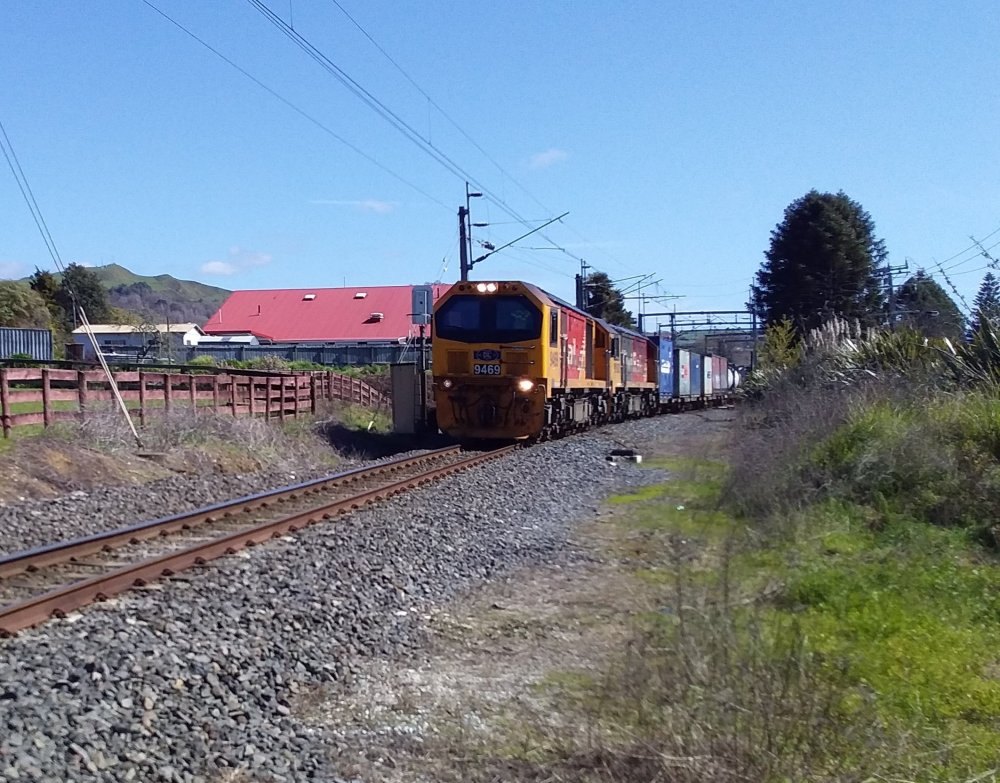
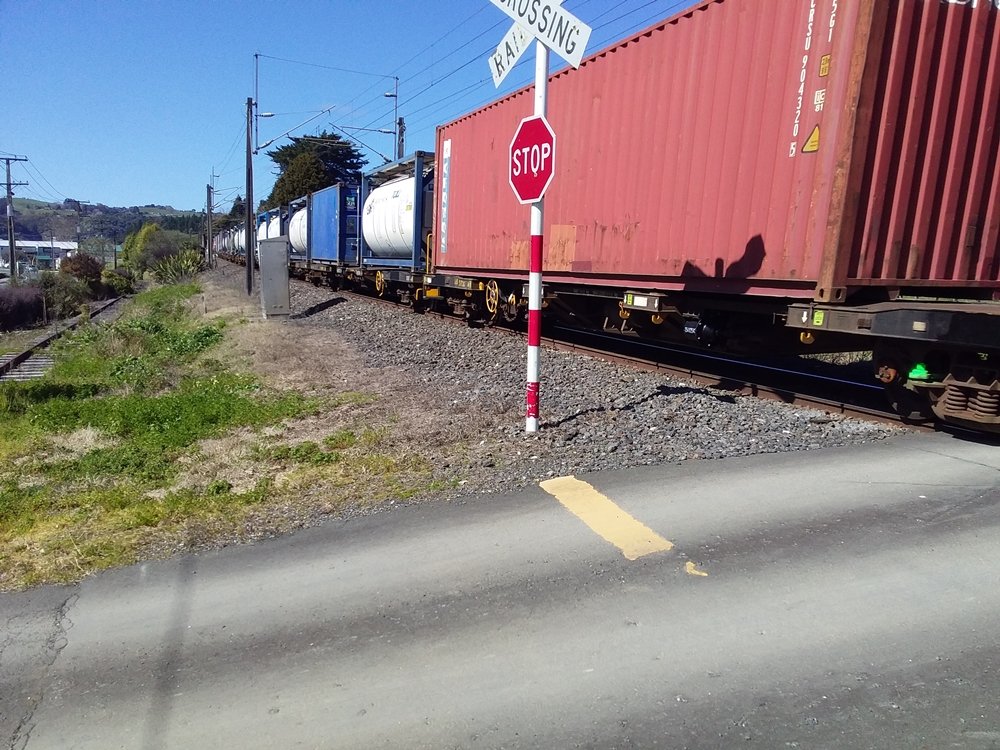

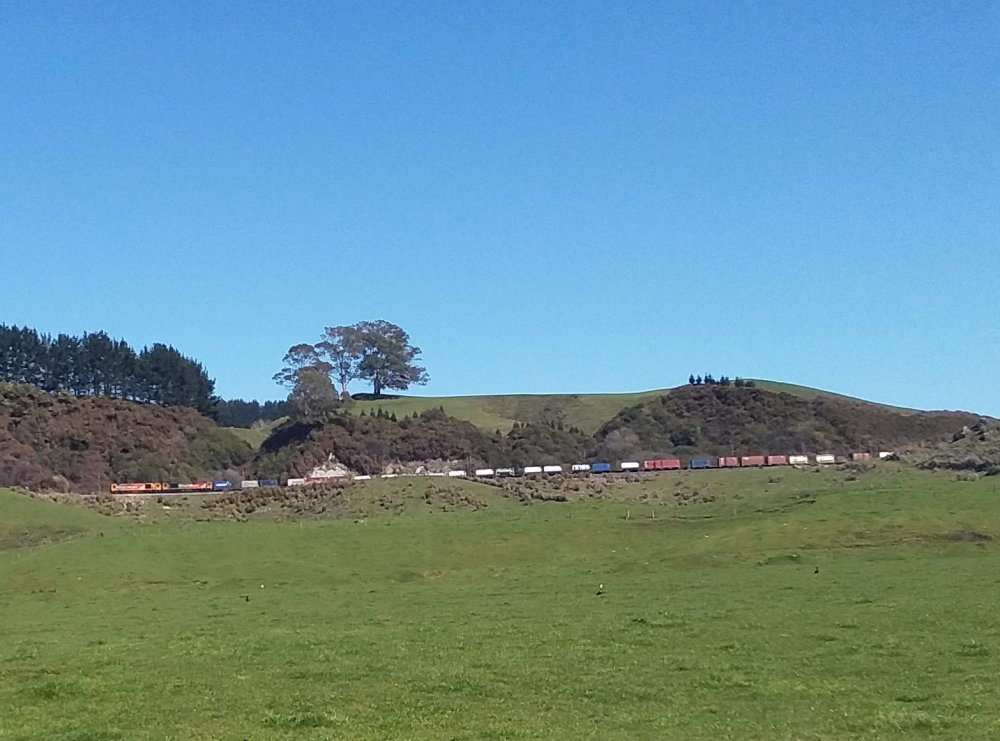
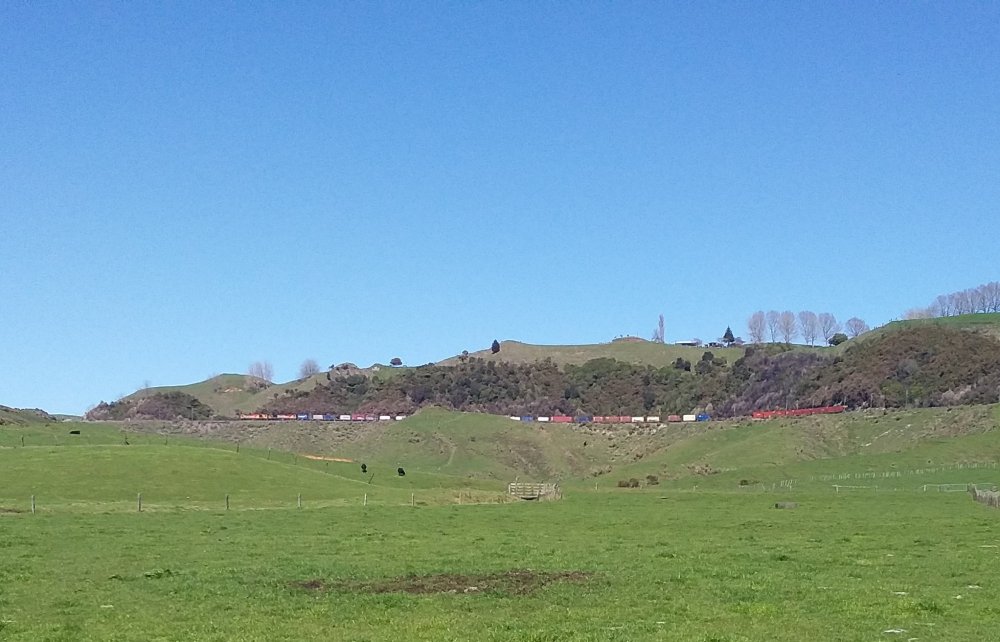
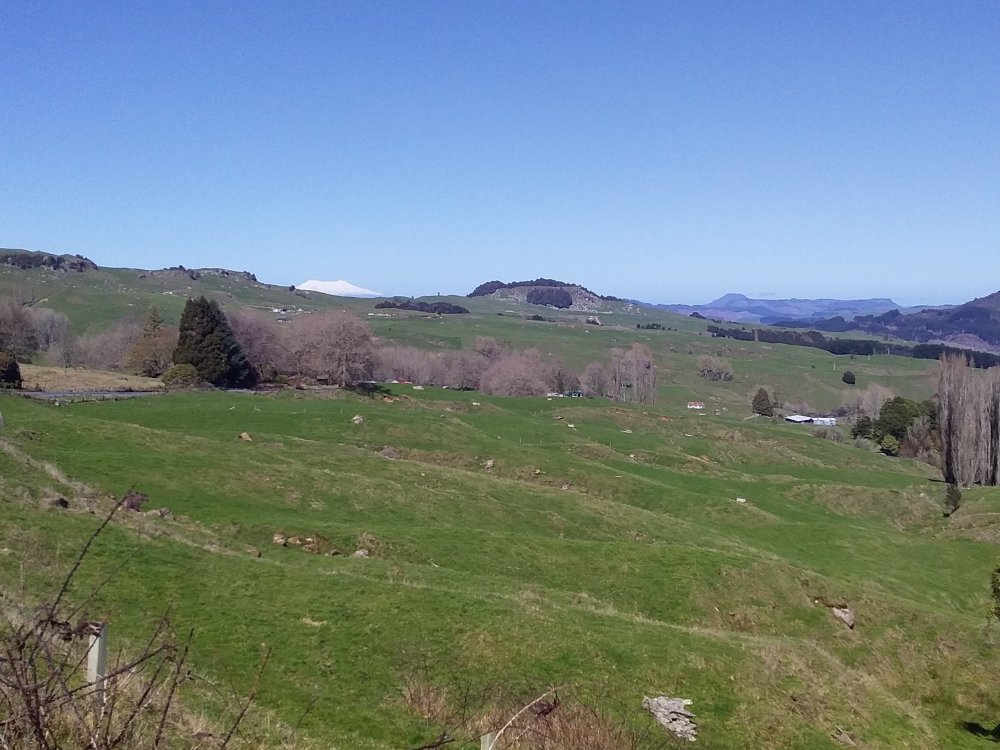
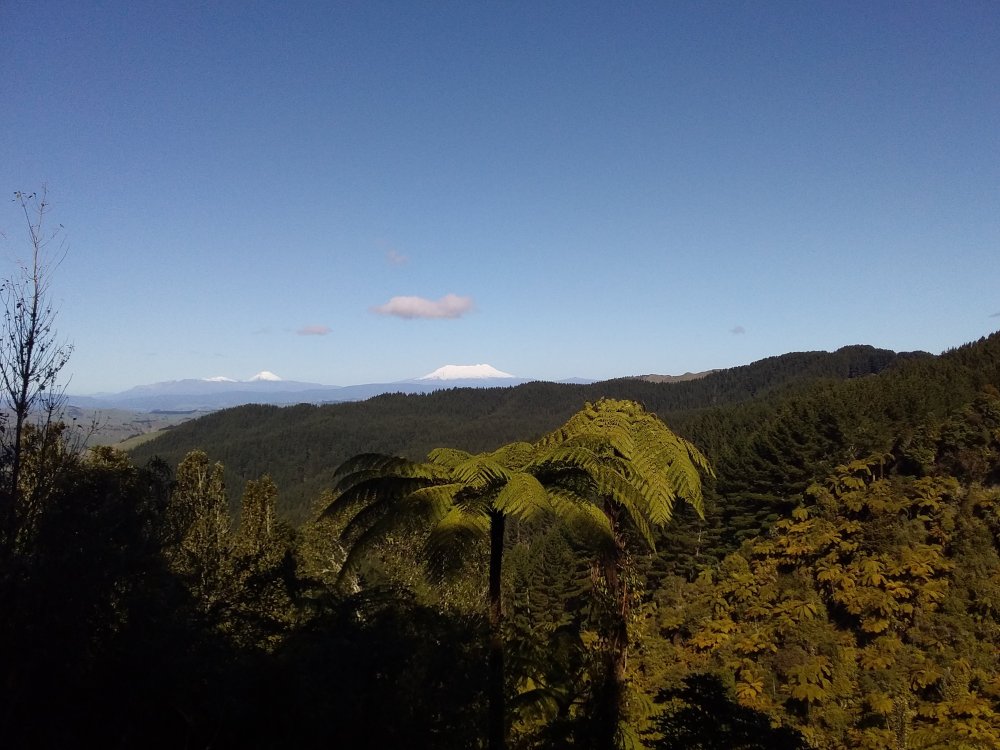
.jpg.17f74d98295f230d7811b9e0975dacd2.jpg)

